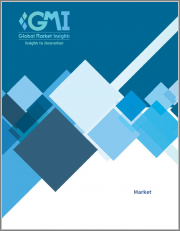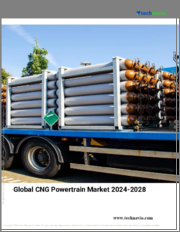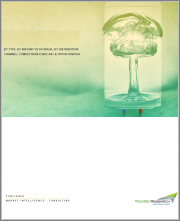
|
시장보고서
상품코드
1394995
세계의 자동차용 파워트레인 시스템 시장 : 파워트레인 유형별, 차종별, 판매채널별, 예측(2023-2032년)Automotive Powertrain Systems Market Size - By Powertrain Type, Vehicle Type, Sales Channels & Forecast, 2023 - 2032 |
||||||
세계의 자동차용 파워트레인 시스템 시장 규모는 업계 대기업간 전략적 제휴 및 거래에 의해 지원되며, 2023-2032년에 8.2%의 CAGR을 기록할 것으로 예측됩니다. 이러한 파트너십은 혁신을 주도하여 효율적이고 친환경적인 파워트레인 솔루션의 개발을 가속화합니다. 예를 들어 2023년 11월 인도 최고의 SUV 제조업체인 M&M(Mahindra & Mahindra)은 전기화 전문 모빌리티 기술 리더인 발레오를 '본 일렉트릭' 승용차 제품군의 일부 부문에 전기 파워트레인을 공급하는 업체로 선정했습니다. 또한 발레오의 전기 유틸리티 차량에 온보드 충전기 콤보를 제공할 예정입니다. 약 10억 달러에 달하는 이 대규모 주문은 발레오의 3분기 실적에 고전압 파워트레인 주문으로 반영되었습니다.
대기업은 전기자동차 기술 발전, 연비 향상, 성능 최적화를 위해 합작투자 및 계약을 활용하고 있습니다. 자동차 파워트레인 시스템 시장 전망은 지속가능한 모빌리티 솔루션에 대한 총체적인 추진력을 반영하고 있으며, 기술 발전을 촉진하는 전략적 제휴 및 협력 관계를 통해 형성되는 자동차 파워트레인 시스템의 변화의 시기를 시사하고 있습니다.
휘발유 부문은 2023-2032년 사이에 크게 발전할 것입니다. 가솔린 기반 파워트레인은 잘 구축된 인프라와 저렴한 가격으로 인해 각광을 받을 것으로 보입니다. 그 효율성과 성능은 세계 소비자층을 계속 만족시킬 것입니다. 가솔린 엔진 시스템은 연비가 개선되고 배출가스가 감소함에 따라 자동차 파워트레인 시스템 시장에서 큰 비중을 차지하고 있으며, 자동차 파워트레인 시스템 영역에서 전통적인 연소 엔진과 진화하는 친환경 대체 엔진 간의 균형을 균형을 이루고 있습니다.
소형 상용차(LCV) 부문은 2023-2032년 두드러진 CAGR을 기록할 것으로 예상되며, LCV는 성능과 연비의 균형을 유지하면서 화물을 운송하는 효율적인 파워트레인 시스템에 의존하고 있습니다. 파워트레인 기술의 혁신은 특히 LCV에 적합하며, 적재량을 최적화하고 기동성을 향상시킬 수 있습니다. 물류 및 E-Commerce가 활성화됨에 따라 민첩하고 연비 효율적인 LCV에 대한 수요가 급증하고 있으며, 이는 자동차 파워트레인 시스템 시장의 성장과 발전에 큰 기여를 하고 있습니다.
아시아태평양의 자동차 파워트레인 시스템 산업은 2023-2032년 괄목할 만한 CAGR을 기록할 것으로 예상됩니다. 급속한 산업화와 도시화로 인해 다양한 차량 부문에서 효율적인 파워트레인에 대한 수요가 증가하고 있습니다. 이 지역은 하이브리드 및 전기 기술을 도입하고 친환경 솔루션을 강조하고 있습니다.
강력한 경제 성장과 급증하는 중산층이 시장을 촉진하며 파워트레인 시스템의 혁신을 주도하고 있습니다. 아시아태평양은 자동차 파워트레인의 트렌드를 주도하고 발전을 촉진하는 역동적인 거점으로서 다양하고 방대한 시장 수요에 부응하고 있습니다. 예를 들어 이스즈 자동차의 후지사와 공장은 2023년 11월 상용 전기자동차(EV) 파워트레인 시스템 및 부품 개발 및 테스트를 위한 새로운 시설을 건설 중이라고 발표했습니다. 이 시설은 배터리, 모터, 열 관리 시스템 등 다양한 요소에 초점을 맞추고 상용 분야의 EV 기술 발전에 기여할 것입니다.
목차
제1장 조사 방법과 조사 범위
제2장 주요 요약
제3장 자동차용 파워트레인 시스템 업계 인사이트
- 에코시스템 분석
- 업계에 대한 영향요인
- 촉진요인
- 업계의 잠재적 리스크와 과제
- 성장 가능성 분석
- COVID-19 영향 분석
- 규제 상황
- 미국
- 유럽
- 가격 분석 : 2022년
- 상환 시나리오
- 기술 전망
- 향후 시장 동향
- GAP 분석
- Porter의 산업 분석
- PESTEL 분석
- 러시아·우크라이나 전쟁의 영향
제4장 경쟁 구도(2022년)
- 서론
- 기업 매트릭스 분석
- 세계의 기업 점유율 분석
- 경쟁 포지셔닝 매트릭스
- 전략 대시보드
제5장 자동차용 파워트레인 시스템 시장 규모·예측 : 파워트레인 유형별(2018-2032년)
- 내연기관(ICE)
- 하이브리드 파워트레인
- 전기 파워트레인
제6장 자동차용 파워트레인 시스템 시장 규모·예측 : 차종별(2018-2032년)
- 승용차
- 소형 상용차(LCV)
- 대형 상용차(HCV)
- OHV(Off-highway Vehicle)
제7장 자동차용 파워트레인 시스템 시장 규모·예측 : 판매채널별(2018-2032년)
- OEM(Original Equipment Manufacturers)
- 애프터마켓
제8장 자동차용 파워트레인 시스템 시장 규모·예측 : 지역별(2018-2032년)
- 주요 동향 : 지역별
- 북미
- 미국
- 캐나다
- 유럽
- 독일
- 영국
- 프랑스
- 스페인
- 이탈리아
- 아시아태평양
- 일본
- 중국
- 인도
- 호주
- 인도네시아
- 말레이시아
- 라틴아메리카
- 브라질
- 멕시코
- 중동 및 아프리카
- 남아프리카공화국
- 사우디아라비아
- 아랍에미리트
제9장 기업 개요
- BorgWarner Inc.
- Continental AG
- Magna International Inc.
- ZF Friedrichshafen AG
- Allison Transmission Holdings Inc.
- Aisin Seiki Co., Ltd.
- Denso Corporation
- GKN Automotive Limited
- Valeo SA
- Schaeffler AG
- Hyundai Transys
- JATCO Ltd.
- Eaton Corporation
- AVL List GmbH
- Ricardo plc
Global Automotive Powertrain Systems Market will witness 8.2% CAGR between 2023 and 2032, propelled by strategic collaborations and deals among industry giants. These partnerships drive innovation, accelerating the development of efficient, eco-friendly powertrain solutions. For instance, in November 2023, Mahindra & Mahindra (M&M), a top SUV manufacturer in India, selected Valeo, a mobility technology leader specializing in electrification, to supply the electric powertrain for a segment of their "Born Electric" passenger vehicle range. Additionally, Valeo will provide the on-board charger combo for their electric utility vehicles. The substantial order, reaching nearly 1 billion dollars, was accounted for in Valeo's Q3 results under their high voltage powertrain orders.
Leading companies leverage joint ventures and agreements to advance electric vehicle technology, enhance fuel efficiency, and optimize performance. The automotive powertrain systems market outlook reflects a collective push for sustainable mobility solutions, underlining a transformative era in automotive powertrain systems shaped by strategic alliances and collaborations fostering technological advancements.
The overall Automotive Powertrain Systems Market is classified based on powertrain type, vehicle type, and region.
Gasoline segment will undergo significant development from 2023 to 2032. Gasoline-based powertrains will gain prominence due to their established infrastructure and affordability. Their efficiency and performance continue to cater to a global consumer base. As advancements enhance fuel efficiency and reduce emissions, gasoline-powered systems maintain a substantial automotive powertrain systems market share, representing a balance between traditional combustion engines and evolving eco-friendly alternatives within the automotive powertrain systems domain.
Light commercial vehicles (LCVs) segment will register a noteworthy CAGR from 2023 to 2032. LCVs rely on efficient powertrain systems for cargo transportation, balancing performance and fuel economy. Innovations in powertrain technology cater specifically to LCVs, optimizing load capacity and enhancing maneuverability. As logistics and e-commerce thrive, the demand for agile and fuel-efficient LCVs continues to surge, marking them as pivotal contributors to the automotive powertrain systems market growth and evolution.
Asia Pacific automotive powertrain systems industry will showcase a commendable CAGR from 2023 to 2032. Rapid industrialization and urbanization drive demand for efficient powertrains across various vehicle segments. Embracing hybrid and electric technologies, the region emphasizes eco-friendly solutions.
Robust economic growth and a burgeoning middle class propel the market, shaping innovations in powertrain systems. The Asia Pacific stands as a dynamic hub, dictating trends and driving advancements in automotive powertrains, meeting the evolving demands of this diverse and vast market. For instance, in November 2023, Isuzu's Fujisawa plant announced that it is underway creating a new facility dedicated to developing and testing powertrain systems and components for commercial Electric Vehicles (EVs). This facility will focus on various elements, such as batteries, motors, and thermal management systems, contributing to the advancement of EV technology in the commercial sector.
Table of Contents
Chapter 1 Methodology & Scope
- 1.1 Industry coverage
- 1.2 Market scope & definition
- 1.3 Base estimates & calculations
- 1.3.1 Data collection
- 1.4 Forecast parameters
- 1.5 COVID-19 impact analysis at global level
- 1.6 Data validation
- 1.7 Data Sources
- 1.7.1 Primary
- 1.7.2 Secondary
- 1.7.2.1 Paid sources
- 1.7.2.2 Unpaid sources
Chapter 2 Executive Summary
- 2.1 Automotive powertrain systems industry 360 degree synopsis, 2018 - 2032
- 2.2 Business trends
- 2.3 Powertrain Type trends
- 2.4 Vehicle type trends
- 2.5 Sales Channel trends
- 2.6 Regional trends
Chapter 3 Automotive Powertrain Systems Industry Insights
- 3.1 Industry ecosystem analysis
- 3.2 Industry impact forces
- 3.2.1 Growth drivers
- 3.2.1.1 Increased demand for fuel-efficient vehicles
- 3.2.1.2 Growing popularity of SUVs and crossovers
- 3.2.1.3 Technological advancements
- 3.2.2 Industry pitfalls & challenges
- 3.2.2.1 High cost of powertrain systems
- 3.2.2.2 Government regulations
- 3.2.1 Growth drivers
- 3.3 Growth potential analysis
- 3.3.1 By Powertrain Type
- 3.3.2 By Vehicle type
- 3.3.3 By Sales Channel
- 3.4 COVID- 19 impact analysis
- 3.5 Regulatory landscape
- 3.5.1 U.S.
- 3.5.2 Europe
- 3.6 Pricing analysis, 2022
- 3.7 Reimbursement scenario
- 3.8 Technology landscape
- 3.9 Future market trends
- 3.10 GAP analysis
- 3.11 Porter's analysis
- 3.12 PESTEL analysis
- 3.13 Impact of Russia Ukraine war
Chapter 4 Competitive Landscape, 2022
- 4.1 Introduction
- 4.2 Company matrix analysis, 2022
- 4.3 Global company market share analysis, 2022
- 4.4 Competitive positioning matrix
- 4.5 Strategy dashboard
Chapter 5 Automotive Powertrain Systems Market Size and Forecast, By Powertrain Type 2018 - 2032
- 5.1 Internal Combustion Engine (ICE)
- 5.1.1.1 Gasoline
- 5.1.1.2 Diesel
- 5.1.1.3 Compressed Natural Gas
- 5.2 Hybrid Powertrain
- 5.2.1.1 Full Hybrid
- 5.2.1.2 Mild Hybrid
- 5.2.1.3 Plug-in Hybrid
- 5.3 Electric Powertrain
- 5.3.1.1 Battery Electric Vehicle
- 5.3.1.2 Fuel Cell Electric Vehicle
Chapter 6 Automotive Powertrain Systems Market Size and Forecast, By Vehicle Type 2018 - 2032
- 6.1 Passenger Cars
- 6.2 Light Commercial Vehicles (LCVs)
- 6.3 Heavy Commercial Vehicles (HCVs)
- 6.4 Off-Highway Vehicles
Chapter 7 Automotive Powertrain Systems Market Size and Forecast, By Sales Channel 2018 - 2032
- 7.1 Original Equipment Manufacturers (OEMs)
- 7.2 Aftermarket
Chapter 8 Automotive Powertrain Systems Market Size and Forecast, By Region 2018 - 2032
- 8.1 Key trends, by region
- 8.2 North America
- 8.2.1 U.S.
- 8.2.2 Canada
- 8.3 Europe
- 8.3.1 Germany
- 8.3.2 UK
- 8.3.3 France
- 8.3.4 Spain
- 8.3.5 Italy
- 8.4 Asia Pacific
- 8.4.1 Japan
- 8.4.2 China
- 8.4.3 India
- 8.4.4 Australia
- 8.4.5 Indonesia
- 8.4.6 Malaysia
- 8.5 Latin America
- 8.5.1 Brazil
- 8.5.2 Mexico
- 8.6 MEA
- 8.6.1 South Africa
- 8.6.2 Saudi Arabia
- 8.6.3 UAE
Chapter 9 Company Profiles
- 9.1 BorgWarner Inc.
- 9.2 Continental AG
- 9.3 Magna International Inc.
- 9.4 ZF Friedrichshafen AG
- 9.5 Allison Transmission Holdings Inc.
- 9.6 Aisin Seiki Co., Ltd.
- 9.7 Denso Corporation
- 9.8 GKN Automotive Limited
- 9.9 Valeo SA
- 9.10 Schaeffler AG
- 9.11 Hyundai Transys
- 9.12 JATCO Ltd.
- 9.13 Eaton Corporation
- 9.14 AVL List GmbH
- 9.15 Ricardo plc



















